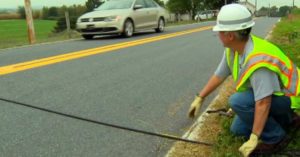The 2014 Ebola outbreak may have been caused from an accidental lab leak at a US Government-funded biolab, according to a new analysis.
The Ebola epidemic is believed to have started from a bat-filled tree in Guinea, but the new report suggests otherwise.
“Virologist Dr. Jonathan Latham — a former researcher at the University of Wisconsin — and journalist Sam Husseini say there are a number of inconsistencies in the official timeline of the West African epidemic,” Daily Mail reports.
“They claim the virus likely emerged during ‘routine research activities’ from a laboratory in Kenema, Sierra Leone, which at the time was receiving funding from the US government for its work on Lassa fever.”
“Emails from WHO officials cited ‘total confusion’ and ‘absolutely no control on what is being done’ at the lab,” Daily Mail added.
Daily Mail had the report:
The lab specialized in hemorrhagic viruses similar to Ebola — though it’s unclear whether it actually handled the epidemic-causing pathogen.
Most experts still believe Ebola emerged naturally during a spillover event from animals in Guinea, around 175miles from the lab.
Bats known to harbor Ebola were identified in a village where the first official patient was diagnosed — but researchers never found the original animal host.
An independent expert responding to the findings told DailyMail.com the theory was ‘certainly possible’, but raised several questions about the credibility of the authors.
Dr Latham has a Masters degree in crop genetics and a PhD in virology, and was a postdoctoral research associate at the University of Wisconsin. He runs a website that has received a strike by online fact-checkers for misleading scientific claims in the past.
Writing in the investigation, the authors said: ‘There is so far no evidence for an animal reservoir for Zaire Ebola in West Africa.
‘The… strain’s sudden appearance in the region was thus unexpected and is still unexplained. Furthermore, the epidemiological investigations in Guinea and Sierra Leone were inconclusive and unconvincing.
‘There was, however, a single spillover event, which is also consistent with a lab origin. And last, there was a research laboratory nearby that specialized in viral hemorrhagic fevers.
‘The VHFC lab may or may not have housed Ebola viruses but it certainly had a dubious biosafety record. All of the evidence… is therefore consistent with a lab origin.’
Ebola virus, also known as Zaire ebolavirus, has a fatality rate of up to 90 per cent in humans.
The Makona variant was responsible for the 2014 epidemic.
According to the CDC, there were 28,652 Ebola cases globally eight years ago, with all but 36 of those occurring in Guinea, Liberia and Sierra Leone. In total, the outbreak caused 11,323 deaths.
Eleven people were treated for Ebola in the US during the 2014 epidemic. Two died — a Liberian and a doctor from Sierra Leone who had both travelled to US.
The widely accepted theory is that the outbreak was triggered when a one-year-old boy named Emile Ouamouno from Guinea became infected after playing with bats in a tree.





